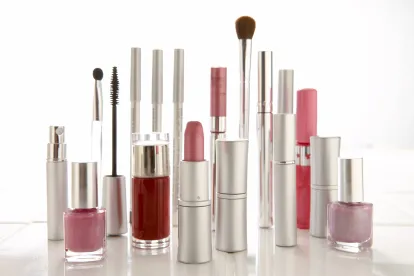In its 14 July 2021, decision in case T-488/20 Guerlain v EUIPO, the General Court of the European Union (GCEU) annulled a decision made by the European Union Intellectual Property Office (EUIPO) that dismissed Guerlain’s EU trademark application for the shape of its “Rouge G” lipstick.
Guerlain filed an EU trademark application in Class 3 for “lipsticks” for the 3D trademark representing the shape of its “Rouge G” lipstick.
Both the EUIPO examiner and Boards of Appeal rejected Guerlain’s application for lack of distinctive character, finding that this shape did not deviate significantly from the norms and customs of the sector. Guerlain lodged an appeal with the General Court, arguing that the shape of its lipstick was visually substantially different from common lipstick shapes.
The General Court’s View
The General Court overturned the Boards of Appeal’s decision after considering that Guerlain’s trademark application has a distinctive character.
The General Court recalled that a three-dimensional mark consisting in the shape of a product must depart significantly from the norm or customs of the concerned sector to be considered distinctive. The fact that a shape is a variant of the usual shapes associated with a type of product is not sufficient to establish that this shape (i.e., the lipstick) has a distinctive character. However, a sector characterized by a wide variety of product shapes, like the lipstick sector, does not necessarily infer that any new possible shape will be perceived as one of them.
In the present case, the General Court stated:
-
The shape of Guerlain’s product, reminiscent of a boat hull or a baby carriage, significantly differs from the standard lipstick shape that exists on the market.
-
The presence of the embossed small oval shape is unusual.
-
The fact that the lipstick represented cannot be placed upright reinforces the uncommon visual aspect of its shape.
The General Court concluded that the relevant public will be surprised by this unusual shape and perceive it as departing significantly from the norm and customs of the lipstick sector and as an indication of commercial origin. Therefore, the General Court ruled that this 3D trademark should be registered by the EUIPO.
Impact on Brand Owners
In practice, the registration of three-dimensional trademarks raises many difficulties because of the stringent validity requirements provided by EU law. There is no doubt that registering three-dimensional trademarks is much more difficult than registering word or figurative trademarks in the European Union.
However, this decision may incentivize companies to seek protection for the distinctive design elements of their products, provided that the shape of their products significantly differs from the norms and customs of the sector.
In addition, three-dimensional trademarks offer extremely interesting strategic perspectives for companies. Indeed, the owner of such trademarks benefits from exclusive, and possibly perpetual, rights on a specific product design throughout the European Union.






 />i
/>i


